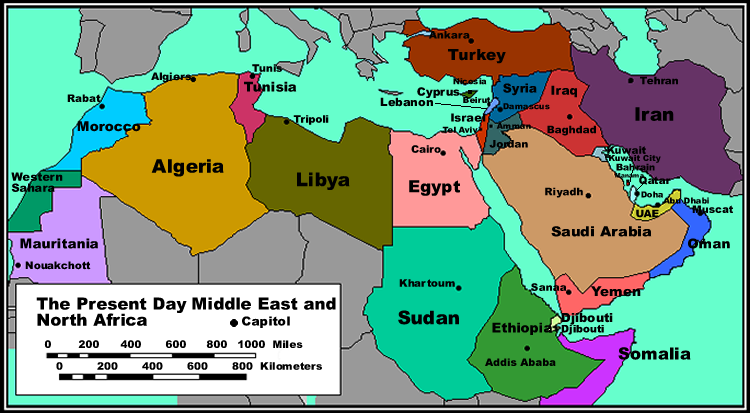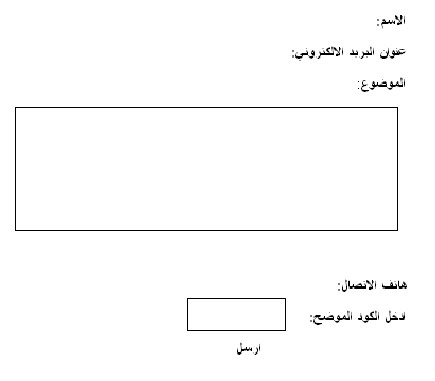Asia
From Wikipedia, the
free encyclopedia
Asia (Listeni/ˈeɪʒə/ or /ˈeɪʃə/)
is the world's largest and most populous continent, located primarily in the
eastern and northern hemispheres. It covers 8.7% of the Earth's total surface
area (or 30% of its land area) and with approximately 4.3 billion people, it
hosts 60% of the world's current human population. During the 20th century
Asia's population nearly quadrupled.
Asia is usually
defined as comprising the eastwards four-fifths of Eurasia. It is located to
the east of the Suez Canal and the Ural Mountains, and south of the Caucasus
Mountains (or the Kuma-Manych Depression) and the Caspian and Black Seas. It is
bounded on the east by the Pacific Ocean, on the south by the Indian Ocean and
on the north by the Arctic Ocean.
Given its size
and diversity, Asia – a toponym dating back to classical antiquity – "is
more a cultural concept" incorporating diverse regions and peoples than a
homogeneous physical entity. Asia differs very widely among and within its
regions with regard to ethnic groups, cultures, environments, economics,
historical ties and government systems.
Greek three-continent system
The
original distinction between Europe and Asia was made by the ancient Greeks.
They used the Aegean Sea, the Dardanelles, the Sea of Marmara, the Bosporus,
the Black Sea, the Kerch Strait, and the Sea of Azov as the border between Asia
and Europe. The Nile was often used as the border between Asia and Africa (then
called Libya), although some Greek geographers suggested the Red Sea would form
a better boundary. Darius' canal between the Nile and the Red Sea introduced
considerable variation in opinion. Under the Roman Empire, the Don River
emptying into the Black Sea was the western border of Asia. It was the
northernmost navigable point of the European shore.[citation needed] In the
15th century the Red Sea became established as the boundary between Africa and
Asia, replacing the Nile. As exploration developed, the border between Asia and
Europe had to be redefined, as the borders of the time did not extend to the
arctic.
Asia-Europe boundary
The
Don River became unsatisfactory to northern Europeans when Peter the Great,
king of the Tsardom of Russia, defeating rival claims of Sweden and the Ottoman
Empire to the eastern lands, and armed resistance by the tribes of Siberia,
synthesized a new Russian Empire extending to the Ural Mountains and beyond,
founded in 1721. The major geographical theorist of the empire was actually a
former Swedish prisoner-of-war, taken at the Battle of Poltava in 1709 and assigned
to Tobolsk, where he associated with Peter's Siberian official, Vasily
Tatishchev, and was allowed freedom to conduct geographical and anthropological
studies in preparation for a future book.
At
home in Sweden again, five years after Peter's death, in 1730 von Strahlenberg
published a new atlas proposing the Urals as the border of Asia. The Russians
were enthusiastic about the concept, which allowed them to keep their European
identity in geography as well as other cultural heritage. Tatishchev announced
that he had proposed the idea to von Strahlenberg. The latter had suggested the
Emba River as the lower boundary. Over the next century various proposals were
made until the Ural River prevailed in the mid-19th-century. The border had
been moved perforce from the Black Sea to the Caspian Sea into which the Ural
River projects. In the maps of the period, Transcaucasia was counted as Asian.
The incorporation of most of that region into the Soviet Union tended to push
views of the border to the south. It also has many mountainous terrains
Asia-Oceania boundary
The
border between Asia and Oceania is placed somewhere in the Malay archipelago.
The terms Southeast Asia and Oceania, devised in the 19th century, have had
vastly different geographic meanings since their inception. Oceania has never
been Asia, whatever it may have been defined to be. The chief factor in
determining what islands of the Malay Archipelago are Asian has been the
location of the colonial possessions of the various empires there (not all
European). Lewis and Wigen assert, "The narrowing of 'Southeast Asia' to
its present boundaries was thus a gradual process."
Economy
Asia has the
second largest nominal GDP of all continents, after Europe, but the largest
when measured in purchasing power parity. As of 2011, the largest economies in
Asia are China, Japan, India, South Korea and Indonesia. Based on Global Office
Locations 2011, Asia dominated the office locations with 4 of top 5 were in
Asia, Hong Kong, Singapore, Tokyo, London and Shanghai. Around 68 percent of
international firms have office in Hong Kong.
In the late
1990s and early 2000s, the economies of the PRC and India have been growing
rapidly, both with an average annual growth rate of more than 8%. Other recent
very high growth nations in Asia include Malaysia, Indonesia, Pakistan,
Thailand, Vietnam, Mongolia, Uzbekistan, Cyprus and the Philippines, and
mineral-rich nations such as Kazakhstan, Turkmenistan, Iran, Brunei, United
Arab Emirates, Qatar, Kuwait, Saudi Arabia, Bahrain and Oman.
According to
economic historian Angus Maddison in his book The World Economy: A Millennial
Perspective, India had the world's largest economy during 0 BCE and 1000 BCE.
China was the largest and most advanced economy on earth for much of recorded
history, until the British Empire (excluding India) overtook it in the mid-19th
century. For several decades in the late twentieth century Japan was the
largest economy in Asia and second-largest of any single nation in the world,
after surpassing the Soviet Union (measured in net material product) in 1986
and Germany in 1968. (NB: A number of supernational economies are larger, such
as the European Union (EU), the North American Free Trade Agreement (NAFTA) or
APEC). This ended in 2010 when China overtook Japan to become the world's
second largest economy.
In the late
1980s and early 1990s, Japan's GDP was almost as large (current exchange rate
method) as that of the rest of Asia combined.[citation needed] In 1995, Japan's
economy nearly equaled that of the USA as the largest economy in the world for
a day, after the Japanese currency reached a record high of 79 yen/US$.
Economic growth in Asia since World War II to the 1990s had been concentrated
in Japan as well as the four regions of South Korea, Taiwan, Hong Kong and
Singapore located in the Pacific Rim, known as the Asian tigers, which have now
all received developed country status, having the highest GDP per capita in
Asia.
It is forecasted
that India will overtake Japan in terms of nominal GDP by 2020. In terms of GDP
per capita, both nominal and PPP-adjusted, South Korea will become the second
wealthiest country in Asia by 2025, overtaking Germany, the United Kingdom and
France. According to IMF statistics for the year 2010, Taiwan PPP-adjusted GDP
per capita, at USD 34,743, is already higher than that of Finland, France, or
Japan.[citation needed] By 2027, according to Goldman Sachs, China will have
the largest economy in the world. Several trade blocs exist, with the most
developed being the Association of Southeast Asian Nations.
Asia is the
largest continent in the world by a considerable margin, and it is rich in
natural resources, such as petroleum, forests, fish, water, rice, copper and
silver. Manufacturing in Asia has traditionally been strongest in East and
Southeast Asia, particularly in the China, Taiwan, South Korea, Japan, India,
the Philippines, and Singapore. Japan and South Korea continue to dominate in
the area of multinational corporations, but increasingly the PRC and India are
making significant inroads. Many companies from Europe, North America, South
Korea and Japan have operations in Asia's developing countries to take
advantage of its abundant supply of cheap labour and relatively developed
infrastructure.
According to
Citigroup 9 of 11 Global Growth Generators countries came from Asia driven by
population and income growth. They are Bangladesh, China, India, Indonesia,
Iraq, Mongolia, Philippines, Sri Lanka and Vietnam. Asia has four main
financial centres: Tokyo, Hong Kong, Singapore and Shanghai. Call centres and
business process outsourcing (BPOs) are becoming major employers in India and
the Philippines due to the availability of a large pool of highly skilled,
English-speaking workers. The increased use of outsourcing has assisted the
rise of India and the China as financial centres. Due to its large and
extremely competitive information technology industry, India has become a major
hub for outsourcing.
In 2010, Asia
had 3.3 million millionaires (people with net worth over US$1 million excluding
their homes), slightly below North America with 3.4 million millionaires. Last
year Asia had toppled Europe.[38] Citigroup in The Wealth Report 2012 stated
that Asian centa-millionaire overtook North America's wealth for the first time
as the world's "economic center of gravity" continued moving east. At
the end of 2011, there were 18,000 Asian people mainly in Southeast Asia, China
and Japan who have at least $100 million in disposable assets, while North
America with 17,000 people and Western Europe with 14,000 people.
List in Asia:
Afghanistan,Armenia, Azerbaijan, Bahrain, Bangladesh, Bhutan, Brunei, Burma, Cambodia, the People's Republic of China, Cyprus, East Timor, Egypt, Georgia, Hong Kong, India, Indonesia, Iran, Iraq, Israel, Japan, Jordan, Kazakhstan, North Korea, the Palestinian National Authority, South Korea, Kuwait, Kyrgyzstan, Laos, Lebanon, Malaysia, Maldives, Mongolia, Nepal,Oman, Pakista, the Philippines, Qatar, Russia, Saudi Arabia, Singapore, Sri Lanka, Syria, Tajikistan, Republic of China (Taiwan), Thailand, Turkey, Turkmenistan, United Arab Emirates, Uzbekistan, Vietnam, Yemen.
Please send us inquiry by filling up the form below if you wish one of our sales team to contact and provide you more information.


